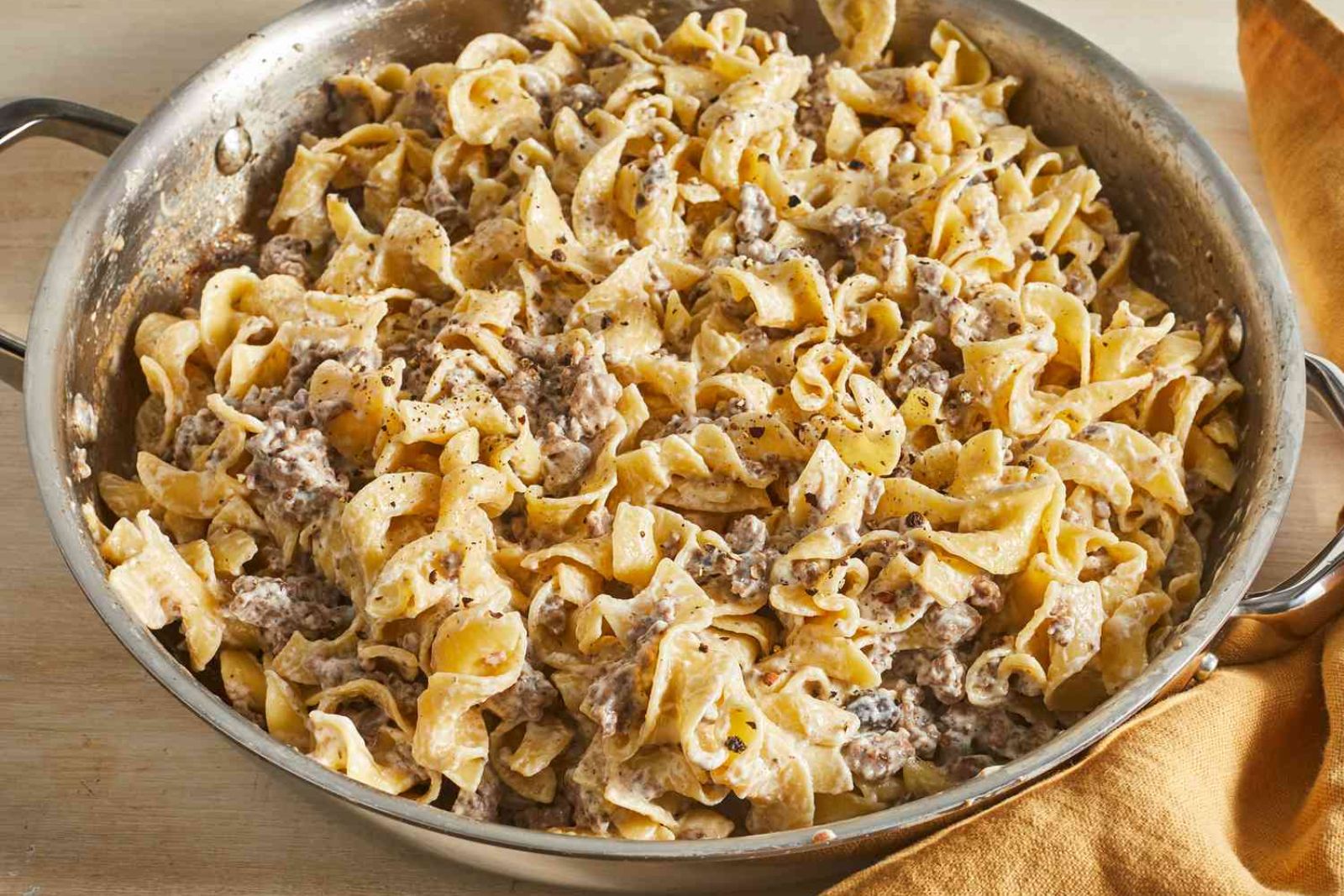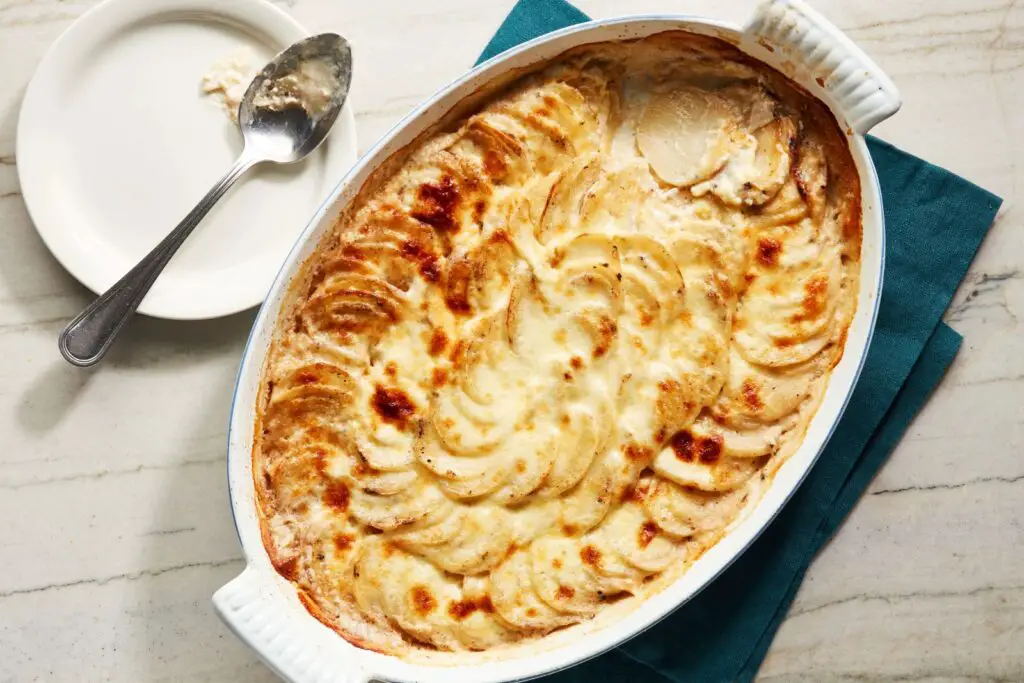
Welcome to the indulgent world of beef stroganoff, a classic dish that brings together tender beef, savory mushrooms, and a luscious creamy sauce. Beef stroganoff is a beloved comfort food known for its rich flavors and satisfying combination of ingredients. With its origins in Russian cuisine, this hearty dish has gained international popularity and has become a staple on many dinner tables. The succulent strips of beef, earthy mushrooms, and velvety sauce make for a truly delightful culinary experience.
If you find yourself with leftover beef stroganoff or want to prepare a batch ahead of time, freezing it is a wonderful option. In this guide, we’ll explore the art of freezing beef stroganoff, sharing expert tips and techniques to preserve its flavors and textures, ensuring that you can enjoy this delectable dish whenever you desire, whether it’s for a quick weeknight dinner or a special occasion feast.
Here are the simple steps to freeze beef stroganoff:
Step 1: Let it Cool
Allowing the Beef Stroganoff to cool completely at room temperature after cooking is an important step in the freezing process. This step might seem simple, but it plays a crucial role in maintaining the quality of the dish during freezing.
When hot food is placed directly into a storage container and sealed, it can create condensation inside the container. This condensation can lead to the formation of ice crystals, which can negatively impact the texture and taste of the Beef Stroganoff when it’s thawed and reheated.
By allowing the Beef Stroganoff to cool at room temperature, you’re giving it time to release excess heat and moisture. This gradual cooling process helps to minimize the formation of condensation inside the storage containers.
It’s essential to note that leaving the Beef Stroganoff out at room temperature for too long can lead to bacterial growth. Therefore, it’s recommended to let it cool for no more than 1-2 hours before proceeding to the next steps of portioning and packaging for freezing.
Taking the time to let the Beef Stroganoff cool properly before freezing is a small but significant step that ensures the best possible texture and taste when you eventually thaw and reheat the dish. By preventing excess moisture from accumulating in the storage containers, you can maintain the integrity of the Beef Stroganoff and enjoy a delicious meal every time you decide to indulge in this savory classic.
Step 2: Portion and Package
Once the Beef Stroganoff has cooled completely, it’s time to divide it into suitable portions and package them properly for freezing. This step is essential for convenience, efficient thawing, and maintaining the quality of the dish.
- Portioning: Consider your needs and preferences when deciding on the portion sizes. You can divide the cooled Beef Stroganoff into individual servings if you prefer single meals, or you can opt for larger portions for family-sized servings. Portioning the Beef Stroganoff beforehand allows you to thaw only the amount you need, reducing waste and ensuring that the remaining portions remain untouched in the freezer until needed.
- Packaging: Choose freezer-safe containers or resealable freezer bags for packaging the Beef Stroganoff. Freezer-safe containers should be made of sturdy materials that can withstand low temperatures without cracking or breaking. Resealable freezer bags should be thick and durable, designed specifically for freezer storage.
- Airtight Packaging: Regardless of the packaging method you choose, it’s crucial to ensure that it is airtight. Properly sealing the containers or bags helps prevent air from entering, which can lead to freezer burn and deterioration of the quality of the Beef Stroganoff over time.
- Removing Air: When using resealable freezer bags, try to remove as much air as possible before sealing them. This can be done by gently pressing the bag and allowing the air to escape before closing the seal. Removing excess air reduces the risk of freezer burn and helps maintain the flavor and texture of the dish.
Proper portioning and packaging are vital for the long-term storage of Beef Stroganoff. By dividing it into suitable portions and using appropriate containers or bags, you can easily retrieve and thaw the desired amount without compromising the quality of the remaining portions. Airtight packaging prevents freezer burn and preserves the flavors and textures of the dish. Taking the time to package the Beef Stroganoff correctly ensures that you can enjoy a delicious meal every time you reach your freezer.
Step 3: Label and Date
Before you place the packaged Beef Stroganoff in the freezer, it’s important to label each container or bag with relevant information. This step may seem small, but it plays a significant role in maintaining organization and ensuring that you consume the oldest portions first, optimizing freshness and quality.
- Labeling: Using a permanent marker or freezer-safe labels, clearly write the name of the dish, in this case, “Beef Stroganoff,” on each container or bag. This makes it easy to identify the contents at a glance, especially if you have multiple dishes stored in the freezer.
- Date of Freezing: In addition to the dish name, include the date of freezing on the label. This is essential for keeping track of the storage time and allows you to prioritize consuming the oldest portions first. Properly dated labels help prevent the Beef Stroganoff from being forgotten or left in the freezer for an extended period, ensuring that it is enjoyed at its best quality.
- Placement of Labels: Place the labels in a visible area on the containers or bags, ensuring they won’t smudge or get damaged during storage. It’s helpful to position the labels on the front or top of the packaging for easy reference when selecting portions to thaw.
By labeling each container or bag with the dish name and freezing date, you create an organized system that enables you to manage your frozen Beef Stroganoff efficiently. This simple step allows you to track the storage time, consume the oldest portions first, and maintain the overall quality of the dish. When it’s time to enjoy your Beef Stroganoff, you can easily identify and retrieve the desired portions, ensuring a delightful dining experience every time.
Step 4: Freeze Properly
After properly labeling the containers or bags of Beef Stroganoff, it’s time to place them in the freezer. Following the correct freezing method is crucial for preserving the quality, flavor, and texture of the dish.
- Single Layer: When placing the labeled containers or bags in the freezer, arrange them in a single layer. This allows for efficient and even freezing of the Beef Stroganoff. By keeping the portions in a single layer initially, they have more exposure to the cold air, ensuring they freeze faster and more uniformly.
- Frozen Solid: Allow the labeled portions to freeze completely until they are solid. Freezing the Beef Stroganoff until it reaches a solid state helps maintain its quality over an extended period. This process typically takes several hours or overnight, depending on the thickness and quantity of the portions.
- Rearranging for Space Utilization: Once the portions are frozen solid, you can rearrange them in the freezer to maximize space utilization. Stack them if necessary, but ensure there is enough space between the portions for proper airflow. Adequate airflow helps maintain a consistent temperature throughout the freezer and prevents freezer burn or temperature fluctuations that may compromise the quality of the Beef Stroganoff.
- Avoid Overcrowding: It’s essential not to overcrowd the freezer with too many containers or bags. Overcrowding restricts airflow and can lead to uneven freezing or variations in temperature, affecting the quality of the Beef Stroganoff. Leave enough space between the portions for the cold air to circulate freely, promoting optimal freezing conditions.
By proper freezing procedures, you can ensure that your Beef Stroganoff retains its flavors, textures, and overall quality during storage. Placing the labeled portions in a single layer, allowing them to freeze solid, and rearranging them in the freezer with adequate spacing guarantees optimal freezing conditions. With careful attention to freezing, your Beef Stroganoff will be preserved perfectly, ready to be thawed and enjoyed whenever you desire a satisfying meal.
How long can beef stroganoff last in the freezer?
Beef Stroganoff can last in the freezer for up to 3 to 4 months. Properly stored and sealed, it maintains its quality and flavor during this time. However, for the best taste, it is recommended to consume it within the first 2 to 3 months of freezing.
Step 5: Thaw and Reheat
Thawing and reheating the frozen Beef Stroganoff properly is key to maintaining its delicious flavors and textures. Here’s a step-by-step guide to ensure the best results:
- Thawing in the Refrigerator: When you’re ready to enjoy the Beef Stroganoff, transfer the desired portion from the freezer to the refrigerator. Thawing the dish slowly in the refrigerator is the safest method as it helps preserve the flavors and textures while minimizing the risk of bacterial growth. Place the portion in a covered container or on a plate to catch any potential drips. Allow the Beef Stroganoff to thaw overnight or for approximately 8-12 hours, depending on the portion size and thickness.
- Reheating on the Stovetop: Once the Beef Stroganoff has thawed completely, it’s time to reheat it. Transfer the thawed portion to a saucepan or skillet and heat it over low heat on the stovetop. This gentle heating method helps maintain the integrity of the dish without overcooking or altering the flavors.
- Stirring Occasionally: While reheating, remember to stir the Beef Stroganoff occasionally to ensure even heating and to prevent it from sticking to the bottom of the pan. Stirring also helps distribute the heat evenly, avoiding hot spots that could affect the texture.
- Reaching the Desired Serving Temperature: Continue heating the Beef Stroganoff on low heat until it reaches the desired serving temperature. This temperature will vary based on personal preference, but it’s generally recommended to heat it until it’s piping hot throughout.
- Avoiding Overheating: Be cautious not to overheat the Beef Stroganoff, as it contains sour cream, which can curdle if exposed to high heat. Low heat is crucial to maintain the creamy texture and prevent any unwanted separation or curdling.
By thawing the frozen Beef Stroganoff in the refrigerator overnight and reheating it gently on the stovetop, you can ensure that the flavors and textures remain intact. Taking care to stir occasionally and avoid overheating guarantees a perfectly reheated dish that is as delicious as when it was freshly cooked. Now you can savor the comforting flavors of Beef Stroganoff whenever you desire a satisfying meal, thanks to the proper thawing and reheating techniques.
Other related questions
Can you refreeze beef stroganoff?
Refreezing beef stroganoff is generally not recommended. Once thawed, the dish undergoes texture and moisture content changes, which can affect its quality and taste upon refreezing. Additionally, repeated freezing and thawing cycles increase the risk of bacterial growth and can compromise food safety. It is advisable to portion and freeze beef stroganoff in suitable quantities to avoid the need for refreezing.
How do I know if the beef stroganoff has gone bad after being frozen?
To determine if beef stroganoff has gone bad after being frozen, several indicators can be observed. Look for any signs of freezer burn, such as discoloration, dryness, or the presence of ice crystals. Additionally, check for off-putting odors, unusual textures, or any signs of mold or spoilage. If any of these signs are present, it is advisable to discard the beef stroganoff as it may have deteriorated in quality and could pose a risk to your health if consumed.
Can I freeze beef stroganoff that has been cooked with a wine-based sauce?
Yes, it is possible to freeze beef stroganoff that has been cooked with a wine-based sauce. However, it’s important to note that the freezing process may slightly alter the flavor and texture of the wine-based sauce. When reheating the frozen beef stroganoff, ensure that it reaches a safe serving temperature to eliminate any potential risks associated with consuming alcohol.
Is it possible to freeze beef stroganoff made with alternative meat substitutes, such as tofu or seitan?
Yes, it is possible to freeze beef stroganoff made with alternative meat substitutes like tofu or seitan. However, it’s important to consider the texture and quality changes that may occur during freezing and thawing. Alternative meat substitutes may have different freezing and reheating characteristics, so it’s advisable to follow specific instructions provided by the manufacturer or recipe guidelines for best results.
Can I freeze beef stroganoff with sour cream?
Yes, it is possible to freeze beef stroganoff with sour cream. However, it’s important to note that sour cream may undergo some texture changes during freezing, which can result in a slightly grainy or separated consistency upon thawing. To minimize these effects, consider adding the sour cream after reheating the beef stroganoff or opt for a sour cream substitute that freezes and reheats better.
Can I freeze beef stroganoff with noodles?
Yes, you can freeze beef stroganoff with noodles. However, it is important to note that the texture of the noodles may change upon freezing and thawing. For best results, slightly undercook the noodles before adding them to the beef stroganoff, as they will continue to cook during reheating. It is recommended to store the beef stroganoff and noodles together in an airtight container or freezer-safe bag to maintain their flavors and prevent freezer burn.








